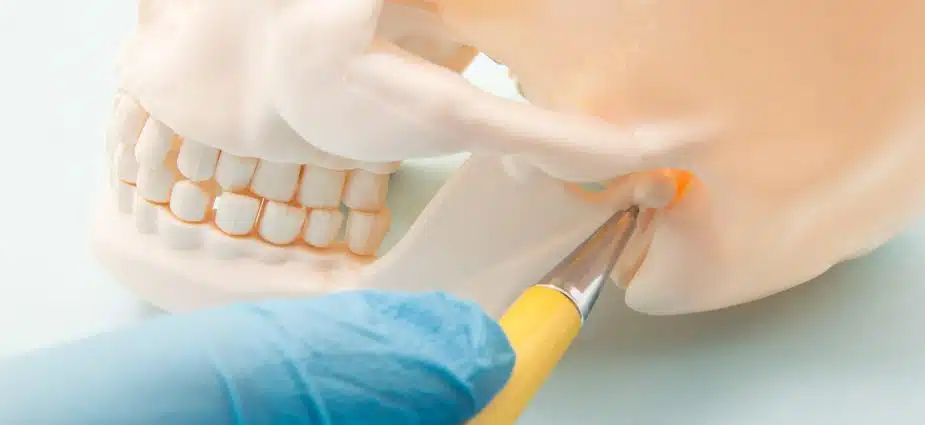Understanding TMJ Pain: Conditions, Causes, and Treatments
Temporomandibular Joint (TMJ) pain is one of those conditions that often flies under the radar until it’s hard to ignore. Whether it’s that dull ache in your jaw, the annoying clicking sound when you chew, or an unbearable headache that seems to pulse from your temples, TMJ pain can be a frustrating and persistent problem. Additionally, many people who experience TMJ pain immediately assume it’s a dental issue, and may agree to dental work that could be prevented if they consider getting a second opinion from experts who specialize in TMJ issues.
But what exactly causes TMJ pain, and what can you do about it? In this article, we’ll take a deep dive into TMJ disorders (TMD), the conditions related to it, and a variety of treatment options that can help alleviate the discomfort. iSpine Rehab’s TMJ Program comprises a team of specialists who have all undergone specific training and certification in TMJ treatment and management, and we work with your dentist to develop a tailored treatment program just for you!
What is TMJ Pain?
The temporomandibular joint is a hinge that connects your jaw to your skull, located just in front of your ears. This joint is incredibly versatile—it allows you to chew, talk, and yawn, making it essential for daily function. When the TMJ becomes inflamed or irritated, you may experience TMJ pain, a condition known as temporomandibular joint dysfunction (TMD).
TMD is an umbrella term for a variety of problems related to the jaw joint and the surrounding muscles. It’s estimated that around 10 million Americans suffer from TMD, and it can affect anyone, regardless of age. The pain can range from mild discomfort to severe, debilitating pain, and can be accompanied by other symptoms like jaw locking, clicking, or popping noises, and difficulty chewing.
Conditions Related to TMJ Pain
TMJ pain often doesn’t occur in isolation. There are various conditions and factors that can contribute to, or worsen, TMJ. This is why it’s so important to include clinicians who consider options beyond solely dental causes. Let’s explore some of the most common ones:
- Repetitive Stress Injuries
Repetitive stress injuries (RSIs) are a significant contributor to TMJ disorders, particularly in today’s world of long hours spent at computers or smartphones. Poor posture and excessive jaw clenching can cause strain on the muscles surrounding the TMJ. Over time, this repetitive strain can lead to discomfort, tightness, and dysfunction in the joint.
For example, people who grind their teeth (bruxism) while sleeping, or who clench their jaws during the day due to stress, may put added pressure on their TMJ, leading to pain and muscle fatigue.
- Headaches and Migraines
If you’ve ever experienced TMJ pain, you may have noticed that it often comes hand-in-hand with headaches. TMJ dysfunction can irritate the muscles of the jaw, which in turn can trigger tension headaches or even migraines. These headaches often feel like a pressure at the temples, around the eyes, or across the forehead, and they can sometimes be mistaken for sinus headaches.
- Postural Syndrome
It’s no secret that poor posture can lead to a multitude of physical complaints. When it comes to TMJ pain, poor posture — particularly slumping forward or rounding your shoulders — can contribute to jaw strain. This is especially true for people who spend a lot of time sitting at desks or staring at screens. Poor posture shifts the alignment of the spine, which in turn affects the muscles and joints of the neck and jaw, contributing to TMD.
- Nerve Compression Syndromes
Certain nerve compression syndromes, such as trigeminal neuralgia, can exacerbate TMJ pain. The trigeminal nerve is responsible for sensations in the face, including the jaw. If this nerve becomes compressed or irritated, it can trigger pain in the jaw, temples, and face, which may be misdiagnosed as a TMJ disorder.
Common Symptoms of TMJ Pain
Now that we’ve looked at some conditions that can contribute to TMJ pain, let’s talk about the symptoms. If you’re dealing with TMD, you might experience:
- Jaw pain or tenderness, especially near the ear or along the jawline.
- Clicking, popping, or grating sounds when opening or closing the mouth.
- Limited jaw movement, making it difficult to chew or yawn.
- Facial pain, including headaches or migraines.
- Earaches or a feeling of fullness in the ears.
- Difficulty or discomfort when speaking or eating.
If any of these symptoms sound familiar, it’s easy to assume your dentist has the answer—but you may actually be dealing with TMJ! But don’t worry — help is available!
Treatment Techniques for TMJ Pain
Treating TMJ pain often involves a multi-faceted approach that targets both the symptoms and the underlying causes of the condition. Below are some effective treatment techniques to consider, either in place of or in addition to the treatments your dental specialist may have proposed:
MedX Cervical Rehabilitation
MedX cervical rehabilitation is a specialized form of treatment designed to address neck and upper spine issues, which often contribute to TMJ pain. The therapy involves using specific machines that target the cervical spine and surrounding muscles to improve posture, reduce tension, and strengthen the muscles that support the TMJ. By addressing these structural issues, MedX rehabilitation can help reduce TMJ discomfort, especially when poor posture is contributing to the problem.
Manual Therapy and Self-Release Techniques
Manual therapy, performed by a physical therapist or chiropractor, involves hands-on techniques to mobilize the joints and soft tissues. These therapies can help alleviate pain, improve jaw mobility, and reduce muscle tightness. Manual therapy may include gentle stretching, joint mobilization, and soft tissue massage. It’s particularly effective for addressing both the muscles and joints involved in TMD. Self-release techniques are simple, hands-on methods that can help alleviate tension in the jaw muscles. The iSpine TMJ experts can perform and advise on both manual therapy and self-release techniques.
Postural and Ergonomic Advice
Ergonomics plays a significant role in preventing and managing TMJ pain, especially for individuals who spend long hours sitting at desks. Ergonomic adjustments, such as ensuring your chair, desk, and screen are at the correct height, can prevent excessive strain on the neck and jaw.
For those who use a phone or tablet frequently, it’s also helpful to avoid cradling the device between your neck and shoulder. Instead, hold it at eye level or use a stand to prevent excessive neck strain.
Good posture is essential for preventing and managing TMJ pain. As mentioned earlier, poor posture can lead to a misalignment of the jaw and increase muscle tension around the TMJ. Postural exercises can help restore proper alignment and improve muscle function.

Final Thoughts on TMJ Pain and Treatment
TMJ pain can be incredibly disruptive, but with the right combination of treatments, relief is possible. Whether through MedX rehabilitation, postural exercises, or self-release techniques, there are multiple strategies that can help you manage your TMJ pain and improve your quality of life. When it comes to jaw pain, the experts at iSpine Clinics are here to help you get back to your life. Setting up a consultation is a good first step to reducing TMJ pain and getting back to your normal life!


